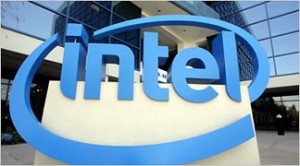 The adapted power-efficient Atom processors used by Intel in the Medfield platform will most certainly provide the company a desirable push into the market for tablets and smartphones, placing it in line with other companies which offer microchips designed by ARM Holdings.
The adapted power-efficient Atom processors used by Intel in the Medfield platform will most certainly provide the company a desirable push into the market for tablets and smartphones, placing it in line with other companies which offer microchips designed by ARM Holdings.
Intel has always faced the brunt for its power-hungry microchips, which has led to manufacturers turning to ARM to provide low-power efficient microchips for mobile devices. Rectifying this could help Intel find its way around newer gadgets in the market, pointed out analysts at Bernstein Research. However, Intel is far from seeing any profit in its mobile processor division as ARM already heavily dominates the market and it might take Intel a couple of years to create an impact. In fact, chips designed by ARM work well for low-end notebooks as well (as in the new Chromebook), thus challenging Intel’s control over the market for personal computers. However, since the chips designed by both the companies are close competitors with respect to power processing and power efficiency functions, the competition might gather steam in the first half of 2013.
Bernstein has compared two RAZR phones and two tablets running Windows 8 with Intel chips against devices using an ARM chip for the purpose of the study. The study concluded that with respect to smartphones, Intel was a steady competitor in the area of power efficiency and could pose a threat to ARM’s dominating status in the market for tablets as well. However, consumers who are looking at low-end notebooks are bound to find ARM chips to be a compelling choice. Handset makers also prefer ARM chips over Intel chips as they find it easy to mix and match features with these chips when compared to the Intel ones. In all, there exists very little difference in the performance and deliverance of power efficiency of chips designed by both the companies.
However, Nathan Brookwood of Insight 64 believes that since most of the major suppliers of smartphones, like Apple and Samsung prefer designing their own chips, Intel may have difficulty finding its way into the smartphone market. Considering the fact that ARM chips are cheaper, Intel might want to look at cutting down on the prices as well as its own profits to compete. Gross margins at Intel, which have been around 62% to 65% in the recent years, are expected to be around 50% if it decides to compete with ARM chipmakers.